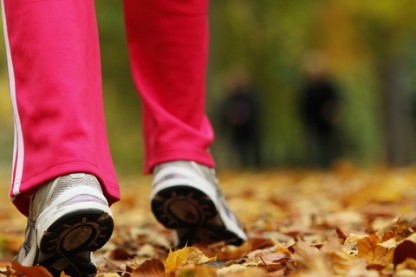The Best Exercise for Chronic Fatigue Syndrome Starts Small
 People with chronic fatigue syndrome (CFS) suffer from excessive tiredness–so much so that bed rest doesn’t relieve symptoms, and fatigue, musculoskeletal pain, impaired concentration, and disturbed sleep interfere with daily life.[1] Most professionals agree that exercise is beneficial in relieving these symptoms, but exercise can be especially difficult for those with CFS, for whom activity can be tiresome and overexertion can result in flare-ups.[2] As a result, most CFS patients limit physical activity to minimize symptoms. But that leads to deconditioning and a negative cycle can soon develop. The best exercise for chronic fatigue syndrome, then, starts small and gradually increases both activity and conditioning.
People with chronic fatigue syndrome (CFS) suffer from excessive tiredness–so much so that bed rest doesn’t relieve symptoms, and fatigue, musculoskeletal pain, impaired concentration, and disturbed sleep interfere with daily life.[1] Most professionals agree that exercise is beneficial in relieving these symptoms, but exercise can be especially difficult for those with CFS, for whom activity can be tiresome and overexertion can result in flare-ups.[2] As a result, most CFS patients limit physical activity to minimize symptoms. But that leads to deconditioning and a negative cycle can soon develop. The best exercise for chronic fatigue syndrome, then, starts small and gradually increases both activity and conditioning.
What is graded exercise?
Graded exercise therapy works to correct the negative cycle of inactivity and deconditioning and gets the body used to physical activity again without the “crash and burn” effect that can occur with overexertion.[3]
The first step is to establish a baseline of achievable aerobic activity, such as walking, cycling, or swimming.[4] This can be different for everyone and depends on the severity of symptoms and other factors. Some people may find it difficult to walk from the kitchen to the bedroom, while others may find it tolerable to go on a 15-minute walk.
Next, plan incremental increases in the time or intensity of the activity.[5] For example, if you can tolerate a 5-minute walk, you may plan to do that every day for two weeks, then increase the duration to 8 minutes per day for the next few weeks. The ultimate goal should be to achieve 30 minutes of light exercise five days a week.
Graded exercise improves CFS symptoms
A small study in 2004 found that 91% of subjects reported feeling better after a graded exercise intervention, with no subjects feeling that the routine worsened symptoms.[4] Although much initial research pointed to the promise of graded exercise, many studies were small and some patient organizations reported that graded exercise could sometimes be harmful.[5]
To strengthen the evidence for graded exercise therapy, a study in 2011 compared the effects of adding adaptive pacing therapy, graded exercise therapy, or cognitive behavioral therapy to specialist medical care.[5] Adaptive pacing therapy is based on the idea that CFS patients have low levels of energy that cannot improve with therapy; the patients are instructed to conserve energy and pace themselves accordingly. Graded exercise therapy and cognitive behavioral therapy (another commonly used treatment for CFS) were found to be much more effective than adaptive pacing therapy.[5]
Another recent study concluded that, “graded exercise has a positive effect on both physical and psychological states of CFS patients. [Graded exercise therapy] can decrease anxiety and improve quality of life of CFS patients.”[6]
To determine if graded exercise may be a good option for you, first discuss it with your physician. (You can find a comprehensive list of integrative physicians in the NHA Doctor and Practitioner Directory). Begin with a time and type of physical activity that is very reasonable and achievable. It is important to remember that graded exercise therapy should not result in overexertion. Try using a heart rate monitor to keep track of your exertion level.[5]
Increase slowly and incrementally; do not feel that you need to reach your eventual goal right away. It may take months to get to your goal. Taking your time will help you to avoid relapse by allowing your body to get used to activity again. If you experience a relapse in symptoms, shorten or cancel the next exercise session.[4]
Share your experience
How do you stay active with chronic fatigue syndrome? What strategies have you found that work? Please share you thoughts in the comments sections below.
[1] Clin Evid (Online). 2011 May 26;2011.
[2] Eur J Clin Invest. 2012 Oct;42(10):1136-44.
[3] Psychol Med. 2013 Oct;43(10):2227-35.
[4] Med J Aust. 2004 May 3;180(9):444-8.


 Protein Needs as We Age
Protein Needs as We Age  Look Beyond the Scale
Look Beyond the Scale  Can Allergies Make You Tired?
Can Allergies Make You Tired? 